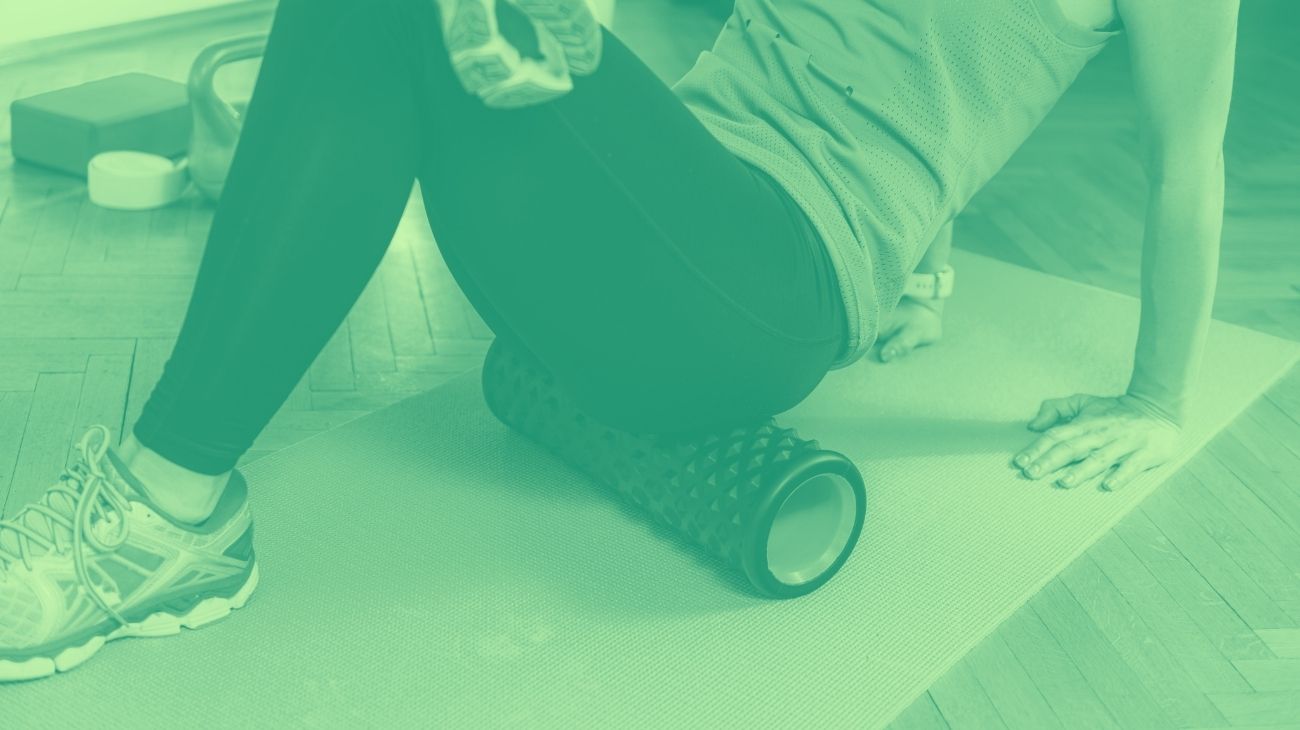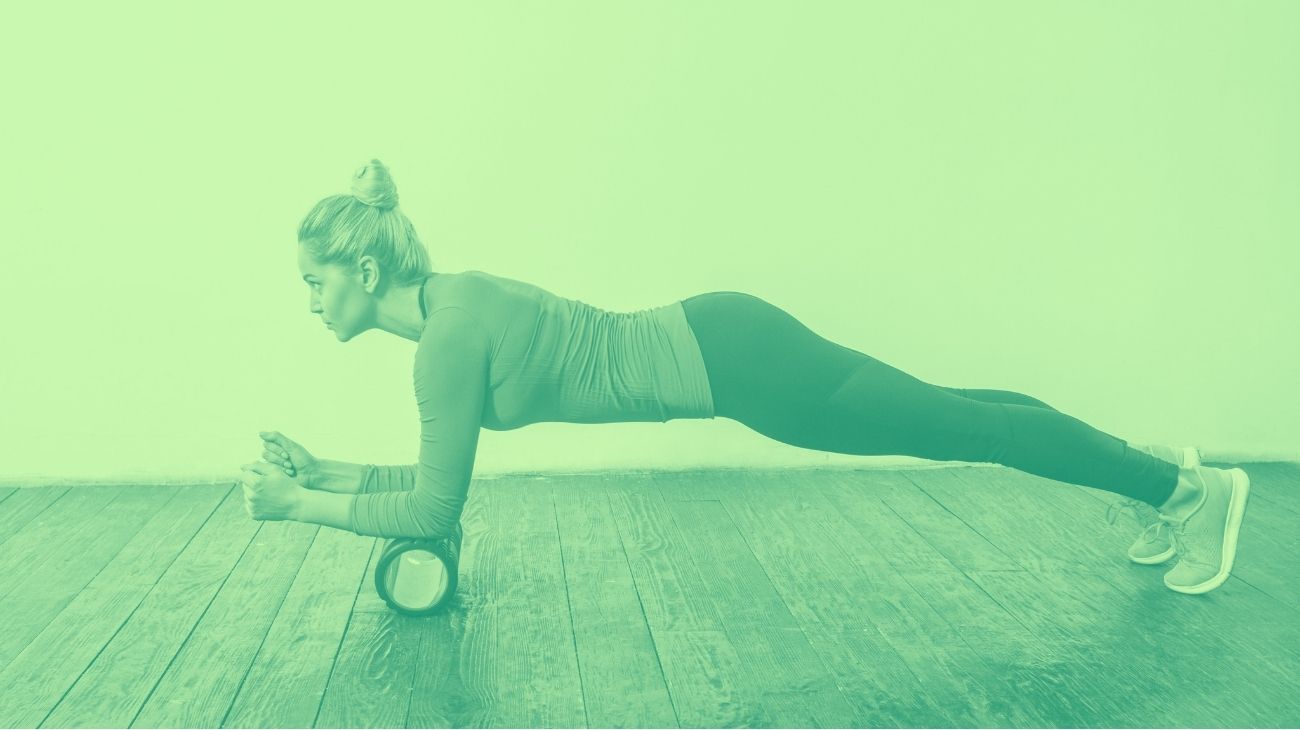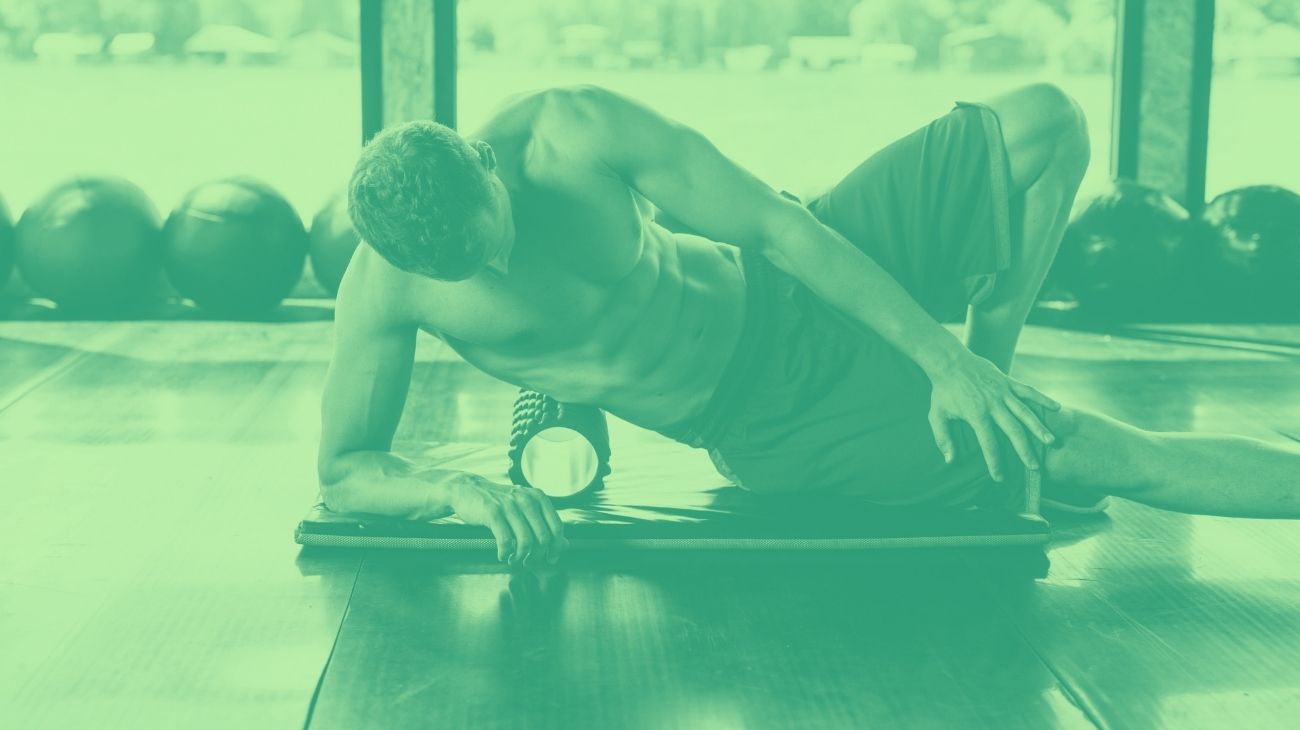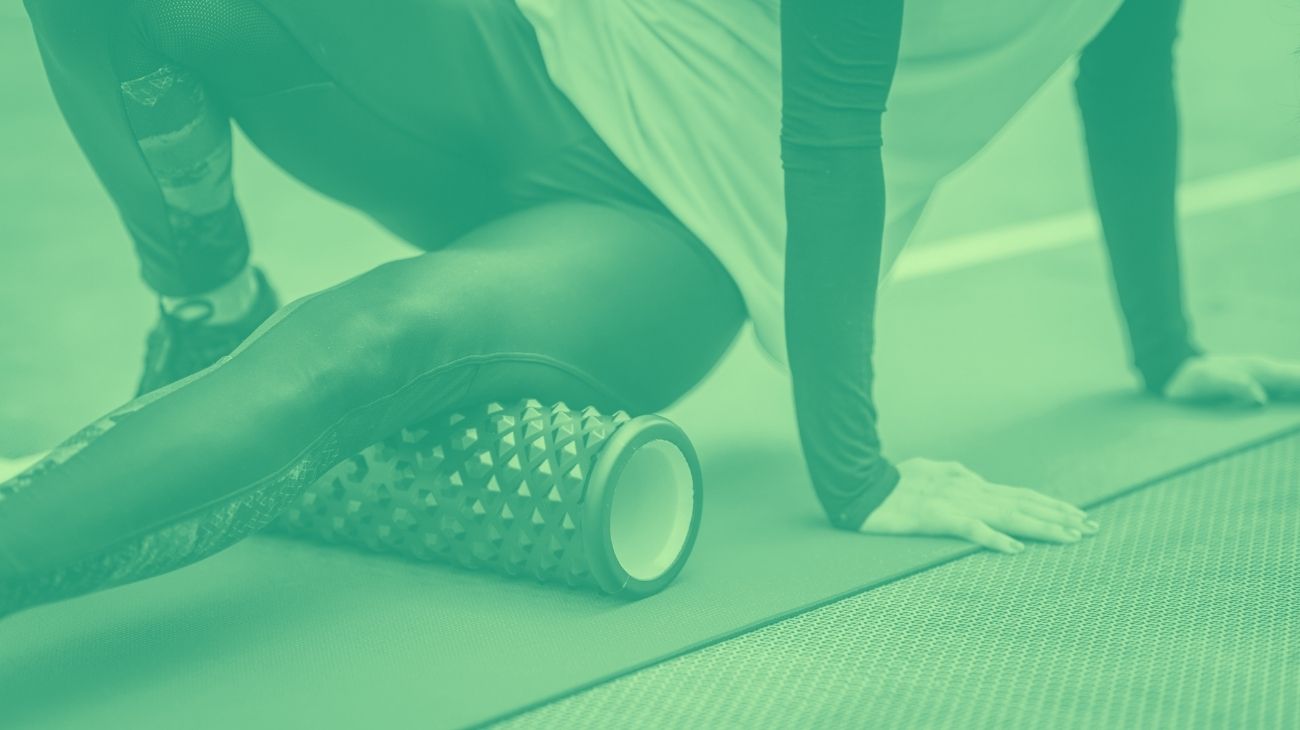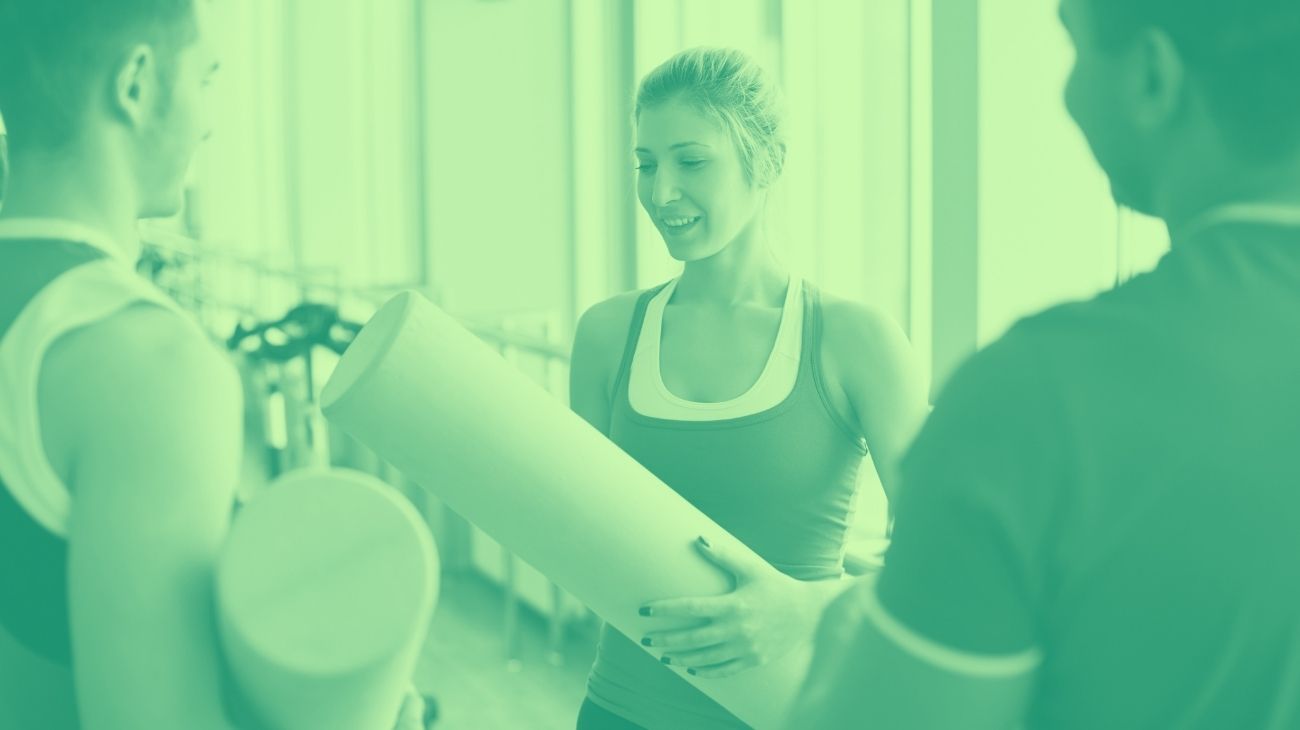- What is the best foam rollers for pain relief?
- Video: How to use Foam Roller?
- The types of foam rollers for muscle massage you should know about
- What types of pain can be relieved by using the foam roller?
- What are the types of foam rollers and what are they used for?
- Foam roller exercises for leg pain
- Foam roller exercises for back pain
- Foam roller training for myofascial calf pain
- Foam roller training for shoulders, upper arms and forearms
Each muscle group needs time to repair damaged tissue and build more strength and mass. If this recovery time is not respected, the body will tire and exhaust itself more easily, leading to mild, moderate and chronic injuries.
The function of the foam roller is to facilitate recovery by relaxing muscles and releasing myofascial tension, both of which are important if you want to allow the body to overcome fatigue from exercise. Learn everything you need to know about using the roller massager here.
What is the best foam rollers for pain relief?
- Measurements: 3x14cm - 13x5,5in
- Material: Polypropylene
- Colors: 7 Models
- Weight: 582gr - 1,28lbs
- Density: Medium
- Perfect balance of softness and firmness
- Three different surface textures
- Users report it is too small
You can enjoy massage therapy on all the deep muscles that cause pain in your back and legs, as it has a revolutionary system of support points. Its foam surface includes tubular bands and hard tips to better adapt to the patient's body. In some advanced muscle disorders, the density of the foam may be low.
- Offers a smooth rolling experience
- Capable of working large muscle groups
- Designed to stimulate blood flow
- Lightweight and easy to carry
- No grooves or 3D texture
- Can glide over slippery floor surfaces
The roller includes a practical guide with instructions that will help you choose stretching exercises. Its design is suitable to stimulate the trigger points of the body and release the stress caused by pain. You can use it on the back, hips, legs and calves, although this does not mean that you cannot include the roller in your pre-competitive warm-up routine. Keep in mind that the contact area may be too small for deep tissue.
- Size: 32,3x13,3cm - 12,75x5,25in
- Material: EVA foam
- Colors: 5 Models
- Weight: 453gr - 1lbs
- Density: Medium
- Provides a deep massage with less effort
- Three different surface textures
- Capable of working large muscle groups
- Texture designed to stimulate blood flow
- Too intense for some people
- Some people prefer a softer roller
When you use this health ally on a daily basis, you will begin to notice a great change in the tone of your muscles and joint flexibility, which will help you achieve better sports results. This massager is considered as a good tool to prevent injuries, you will only have to use it frequently on the affected parts. In some overloaded muscles the benefit of its use may take longer than it should.
- Size: 33x12,7cm - 12,9x5in
- Material: Polypropylene (EPP), EVA Rubber, Polyurethane
- Colors: 6 Models
- Weight: 775gr - 1,70lbs
- Density: Medium
- Perfect for runners, yoga, pilates, etc
- Three different textures and hardnesses
- Different models to choose from
- Provides a deep massage with less effort
- Too intense for some people
- Several users report noises with prolonged use
The weight and size, collaborate to move this massager, so you can not make excuses to miss the activities you enjoy most. It is suitable for use by anyone who performs pilates, yoga or who needs to be standing for a long time. Among the most outstanding features is its length and diameter, although these aspects may be uncomfortable in certain injuries.
- Measurements: 31,7x14cm - 12,5x5,5in
- Material: EVA foam
- Colors: 15 Models
- Weight: 326gr - 0,72lbs
- Density: Medium
- Different designs to choose from
- Texture designed to stimulate blood flow
- Too intense for some people
An innovative design that delivers just the right density of foam to stimulate myofascial release points. By increasing blood flow, the foam roller is an ideal tool to improve sports injuries and achieve faster recovery. It can be used for plantar fasciitis, cervical pain and low back pain, among other ailments. The durability of the materials is good, although in some cases it may fail.
- Measurements: 91x15x10cm - 36x6x4in
- Material: EVA foam
- Colors: Blue
- Weight: Not specified
- Density: High
- Provides a deep massage with less effort
- Easy to use
- Able to work large muscle groups
- Texture designed to stimulate blood flow
- Does not specify weight
- No grooves or 3D texture
It is ideal for use in the back because its size does not generate excessive pressure on the spine, you can also use it in plantar fasciitis. In addition, by not moving during the self-massage sessions, it is possible to precisely control the area of the body where you want to stimulate blood circulation. Please note that the first results may take some time if you are not an expert user.
- Measurements: 66x12,7cm - 26x5in
- Material: Polypropylene
- Colors: Black
- Weight: 2Kg - 4,50lbs
- Density: Extra high
- 2 Textures with different densities
- Different sizes
- Provides a deep massage with less effort
- Texture designed to stimulate blood flow
- Too intense for some people
- Harder and heavier than most
After a few minutes you will begin to feel significant relief, brought about by improved blood circulation. The size helps anyone get the full benefits of myofascial release and massage therapy. The wavy edges will conform to your body and simulate the hands of a physical therapist. Please note that this product has two densities, which can be a bit uncomfortable if you don't know which one to choose for your situation.
- Size: 33x10cm - 13x4in
- Material: Foam
- Colors: Blue, Black, Green
- Weight: 775gr - 1,70lbs
- Density: Extra high
- Suitable for microwave heat therapy
- Easy to clean
- Texture designed to stimulate blood flow
- Perfect balance of softness and firmness
- No materials specified
- Several users report durability issues
It can be used by anyone without deforming its design. By simply lying on the floor it is possible to achieve the ideal pressure to reach the strategic points that generate pain. But this is not the best, you can combine massage therapy with thermotherapy, since it is possible to place the roller inside the microwave to generate therapeutic heat. Keep in mind that, in some cases, the duration of the heat is short.
- Measurements: 30cm - 12in, 45cm - 18in, 91cm - 36in
- Material: Foam
- Colors: Black
- Weight: Not specified
- Density: Medium
- Three different surface textures
- Capable of working large muscle groups
- Does not specify weight
Do not hesitate any longer and choose a reliable product for your health, which will give you the same results of an expert physiotherapist. It includes a library with online instructions to access different types of exercises, which are shown in high quality videos. The multi-density pattern improves flexibility and relieves pain, although it may cause discomfort during the first few days of the session.
- Size: 31,7x13,3cm - 12,5x5,25in
- Material: Polypropylene
- Colors: 10 Models
- Weight: Not specified
- Density: High
- Plantar fasciitis relief
- Provides a deep massage with less effort
- Very sturdy construction
- Perfect balance of softness and firmness
- Does not specify weight
- Too intense for some people
For this reason, in order not to spend too much money and to recover quickly from any injury or prevent the appearance of any disorder, specialists recommend the daily use of foam roller. If what you need is to stimulate the blood to generate the exchange of nutrients and achieve maximum flexibility in the muscle structure, do not hesitate to choose the massage roller. But keep in mind that its contact pattern and density may be poor for certain back injuries.
Video: How to use Foam Roller?
The types of foam rollers for muscle massage you should know about
What types of pain can be relieved by using the foam roller?
- Lumbago: The stimulating roller is ideal for relieving tension and general pain in the back. Often, lumbago is a chronic pain condition. In these cases, you should consult a physical therapist to assess when it is appropriate to use this type of massage product.
- Back pain: you should be careful to stimulate the back of the spine, remembering that the bones should not be stimulated directly by the massage roller. Start with a gentle roller with little pressure if you have no experience with this type of massager.
- Neck pain: as long as the pain is due to stress, tension and minor muscle injuries, you can safely use the roller. Use a soft, smooth roller for this part of the body, and remember that the movements should be subtle at first to avoid injury from the massage routine.
- Tendonitis: Since the roller performs deep massages, it is very helpful to use a roller with grooves and protrusions, as they simulate the shape of fingers and allow you to professionally massage the tendon structure, mainly in the legs.
- Muscle pain: tension, contractures, cramps and even fatigue will leave your muscles sore after strenuous activities such as walking, jogging and running. The roller is great for preparing the body for the changes in your daily routine, and can be used as a preventative measure against sore muscles.
- Pain due to poor circulation: if the pain and swelling are mild, you can use the massage roller daily to increase blood circulation, regulate body temperature and prevent water retention in the lower limbs due to vascular problems.
What are the types of foam rollers and what are they used for?
By density
- Normal: In massage rollers, there are a variety of products on the market. When choosing a product, hardness or density plays a crucial role. The normal or "standard" rollers are ideal if you do not want to have several rollers at home. With this model you can perform all routines with respectable results.
- Gentle: they are the best to start stimulation if you have no experience in using foam rollers. Also, you can use them if you are very sensitive to the skin, such as people with sensory disorders. The stimulation will be more superficial, but it works if you want to relax the muscles.
- Difficult: This is the best option for athletes who already know their bodies and how to treat myofascial tightness and areas of irregular groupings in the muscle fibers. Most have grooves, bulges and button-like features to penetrate deeper into the body.
By size
- Short: these are best for working on the legs, arms and neck because you can better handle this product to provide a safe massage. They are more practical and portable, so this is a sensible purchase if you are constantly on the go.
- Long: These models are great for stimulating the upper body, whether it's the back, chest or sides of the body. They are sturdier and longer, as they cover a larger area of the body and need to remain stable. Long rollers are also generally meant for beginners and you can find them with smooth surfaces.
- Large diameter: they are the most common to use, whether they are long or short rollers. Larger diameters stimulate the back better, but remember that they must be stable and not bend under the weight.
- Small Diameter: These models, which are only half the diameter of the regular roller, are used to bring the body closer to the floor and give people a sense of greater stability. They are usually in demand for home use and you can find them with any type of texture.
By material
- Injected Polyurethane: This is a material that becomes flexible with time and use. You should be sure to buy a one-piece roll if it is made of this material, as the two pieces will not have the durability and resistance you are looking for.
- Polypropylene (EPP): this material is more expensive, but it is used to make professional rollers with higher strength and texture, intended for athletes and physical therapists who will use this type of product intensively. This material has been used for several years and is more durable than others.
- EVA rubber: standard rollers are also mostly made of vinyl acetate, they can withstand medium stress. So if you are a very stressed person and need general relaxation, this massage product is the best choice. When you touch it, you will feel a soft sensation as if you were touching foam.
By shape
- Smooth: These are the designs that made the benefits of foam roller known in the world. They introduce people to this type of myofascial stimulation. In general, they are longer, softer and more flexible, so there is no possible damage from initial abuse.
- With textures: the most advanced and professional rollers have grooves, elevations and nubs that simulate fingers and palms. They create a deeper massage and tend to cause some discomfort depending on how much pressure the person applies.
- Cylindrical: these are transportable products designed for people who need to constantly move from one place to another, but always have the foam roller handy. The functions are the same as the standard rollers and facilitate myofascial release and muscle relaxation.
- Flat base: used to treat trunk balance when people need to work more specifically on their posture. It is like splitting a roller in half, it creates a flat base that prevents the roller from moving; its use is mainly applied in yoga and Pilates.
By technology
- Electric: they are powered by electricity, as they offer vibrations of different intensity. They are more for home use, where you simply place them on the damaged muscles to start relieving myofascial tension.
- Manual: these are the classic rollers we are all familiar with, where body pressure is required and the limbs are used to make the sliding movements the body demands when pain and discomfort are present.
Foam roller exercises for leg pain
What is the purpose of the workout?
Remember that there can be no direct stimulus to the knee, but if you exercise the muscle groups associated with it, you can provide better joint function. The quadriceps help keep the leg straight and allow people to move, and the hamstrings help bend the knee and contribute to traction when walking. These are two muscles that you can work by massaging deeply and keep active.
How is it done?
- A sturdy roller with elevations is recommended.
- Exercise the quadriceps first.
- Lie on your stomach and place the roller on one quadriceps at a time.
- Use your hands to stabilize the roller.
- Start with light pressure, moving from front to back.
- A gentle massage can last three minutes and can be extended to 40 seconds if the intensity is appropriate.
- Take a break and exercise the hamstrings.
- Place the roller underneath the thigh.
- Use your hands and free leg to stabilize and perform the movements.
- You can also exercise for three minutes with gentle movements.
When should you use it?
The best time to use the roller depends on the goal you want to achieve. If you need to change your training, you should prepare your legs with the roller so that the muscles are ready for the new requirements. If you want to relieve muscle soreness, massages must penetrate deeper into the tough legs, and gentle strokes are not enough if you have knots in the muscles.
Foam roller exercises for back pain
What is the purpose?
The back is divided into four main groups, so you can not stimulate them all at the same time with the massage roller. It is important that you focus your work on at least three areas: Back, upper back and lower back. Remember that the ailments to be treated should be mild, with pain that you can tolerate. However, there are chronic conditions that you can treat if the pain is constant and tolerable.
How is it done?
- Once you have decided on an area to exercise, place the foam roller between your body and the floor.
- Use your forearms to regulate body pressure.
- Make gentle gliding motions for three to four minutes when the stimulation is gentle.
- If you are applying intense pressure, some discomfort is normal.
- In the lower back, you should start slowly.
- Stimulation of trigger points should last 40 seconds.
- Remember that you should not apply direct pressure to the vertebrae.
When is it done?
The back routines can be done for muscle fatigue, tension, cramps and spasms, when the muscle fibers are functioning poorly and require relaxation sessions with the foam roller. If you have had previous injuries, you should use the massage roller to warm up the muscles and fascia to prevent damage from over-tensioning during workout sessions.
Foam roller training for myofascial calf pain
What is the purpose of the roller?
TheCalf muscles, the soleus and calf muscles, are sensitive to stimulation and changes in pace when walking or jogging. Remember that you must prepare these tissues so that there are no irregular groupings in their fibers and you avoid fatigue pain. Use the roller so that there is always a good pull of the legs through the calves. If you pay attention to healthy muscles, you will ensure that the tendons and ligaments also work properly.
How is it done?
- You should sit on the floor and be comfortable.
- Place the roller between your calf and the floor.
- With the help of your hands and free leg, perform gentle gliding movements.
- There should be no sudden and intense movements.
- With this routine, you will exercise your calves and soleus at the same time.
- By gliding gently, you can perform the routine for three minutes.
- There should be no pain during the massage.
When is it done?
This type of stimulation is ideal for relieving tension and pain in people who walk and stand for long hours during the day. When you are exposed to physical demands to which you are not accustomed, the calves are the parts of the body that suffer the most and tense up the most. You can perform these routines as a preventive measure when warming up before a workout and before a busy day where you have to walk a lot. With this product you will avoid cramps caused by over tension.
Foam roller training for shoulders, upper arms and forearms
What is the roller used for?
Although the foam roller has been proven to be effective in the upper body and lower extremities, it also achieves excellent myofascial loosening and relaxation of muscle tension in the arms and shoulders. For these areas of the body, it is more advisable to use vibrating rollers as they provide better stimulation, temperature regulation, increased blood flow and more effective cell regeneration.
How is it done?
- Place the massage roller on the area where you feel discomfort, slight pain and tension.
- Turn on the roller and use it with light pressure.
- You can massage for two to three minutes when you feel relief.
- If the roller is manual, you can use gentle gliding movements.
- If you notice knots or trigger points, you should apply more pressure.
- The maximum duration of the massage, if it is intense, is 40 seconds.
- Take your time, you should not rush during the routines.
When is it done?
In this case, the roller is most often used for discomfort. Unlike areas such as the back and legs, tension and weight overload does not usually affect the arms and forearms, unless they are involved in sports such as weightlifting and crossfit, where the upper limbs need to be warmed up with this product. It is a perfect massage item to relieve tension, eliminate hardening and make muscles stronger to lift weights and keep them stable.











